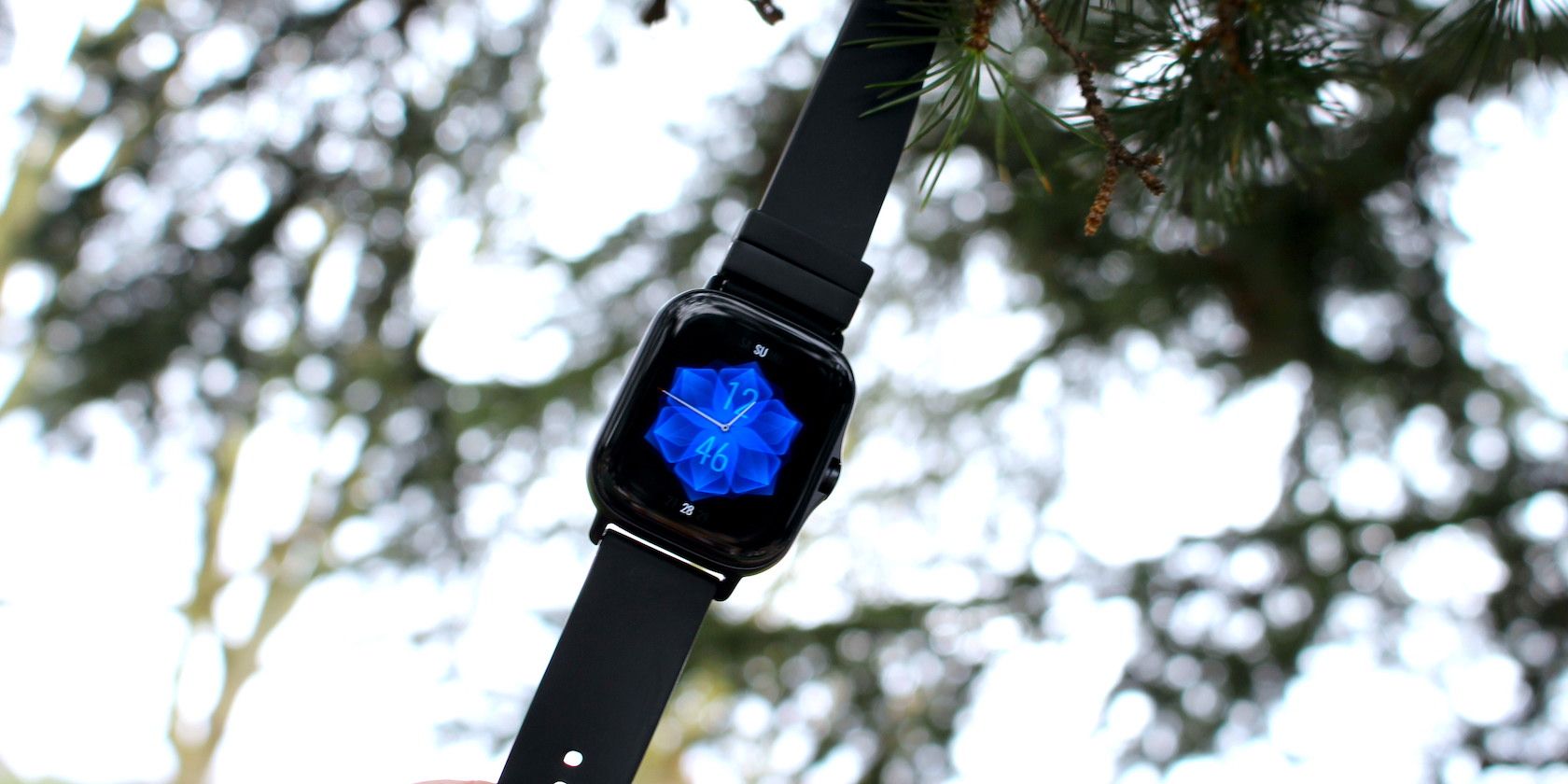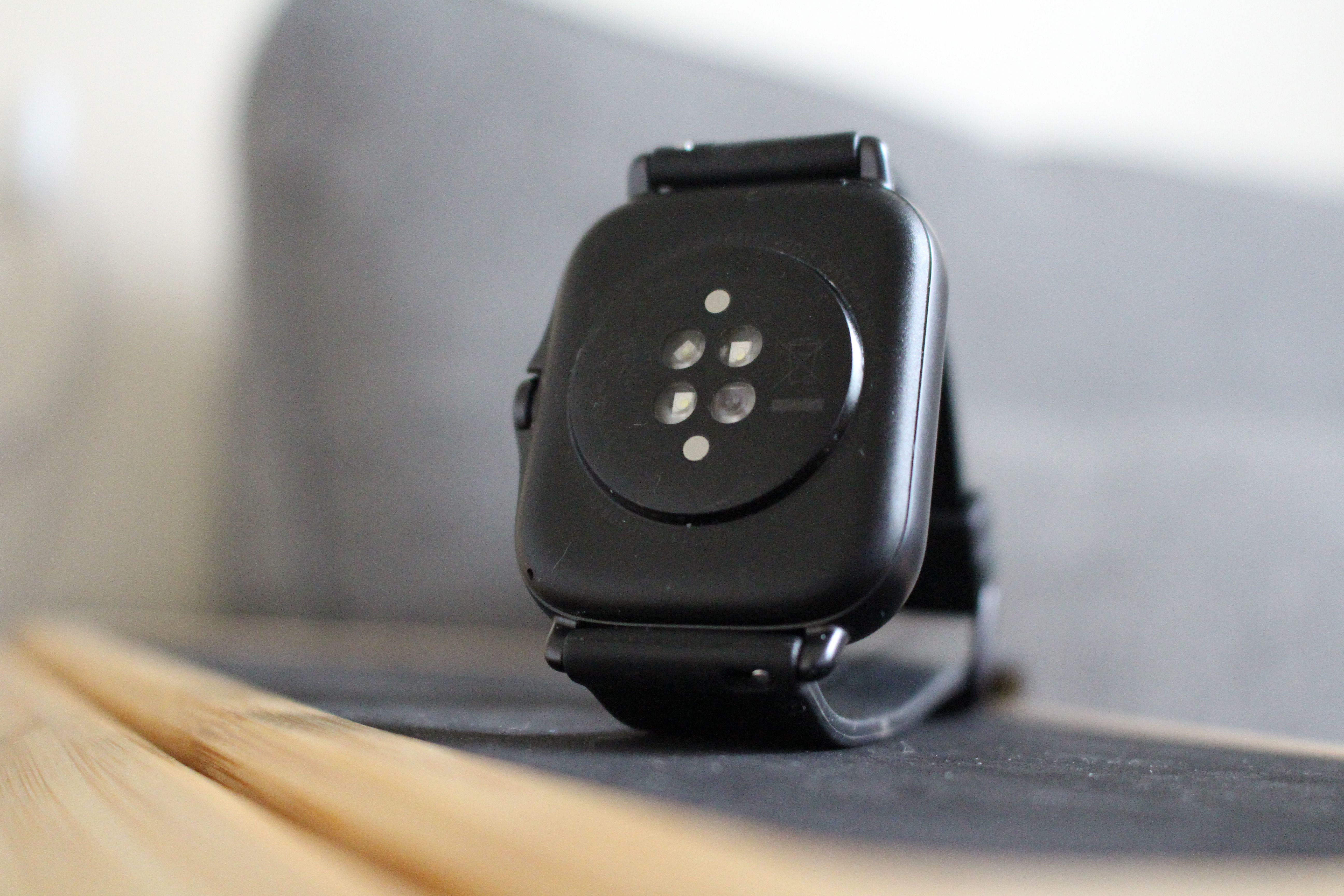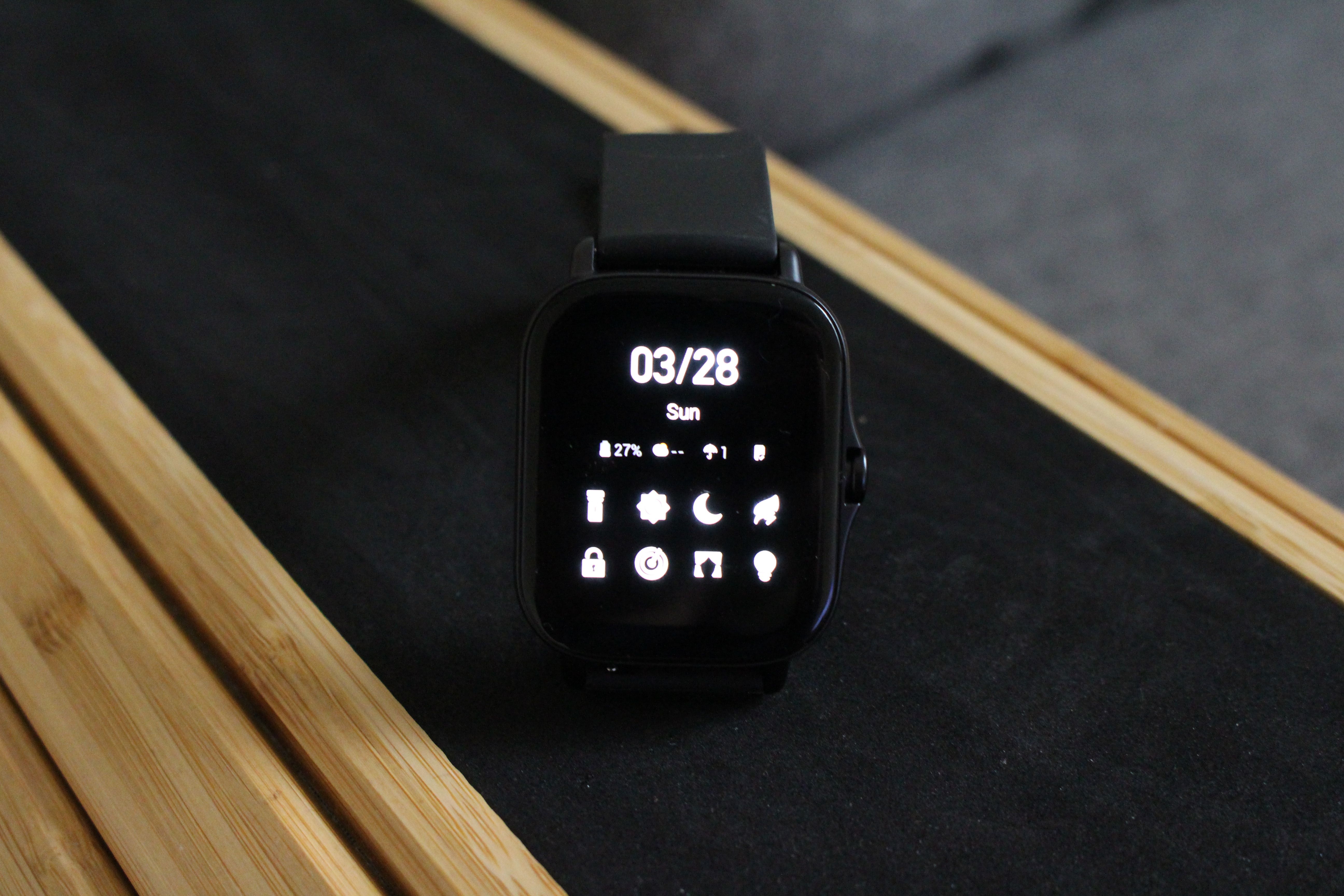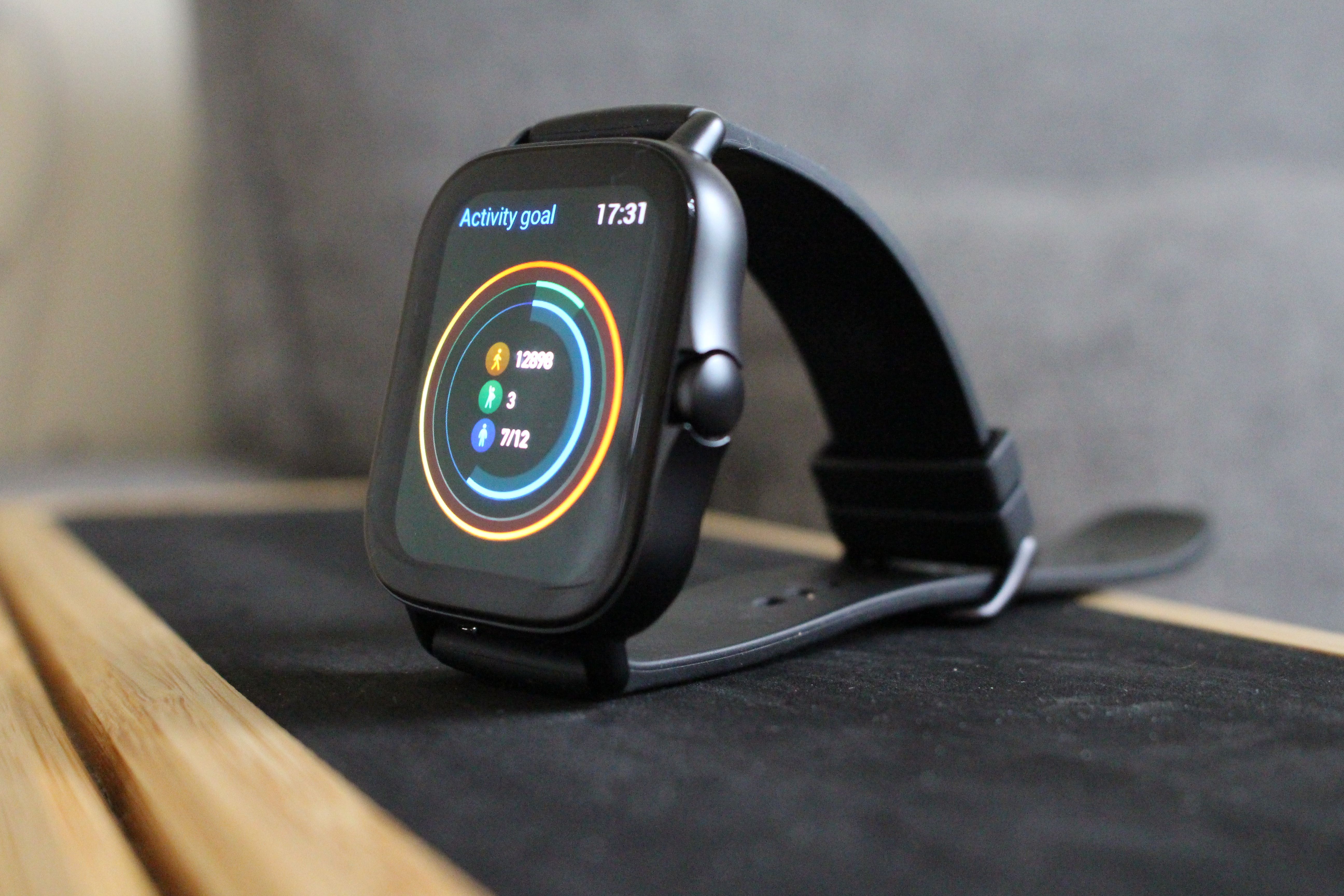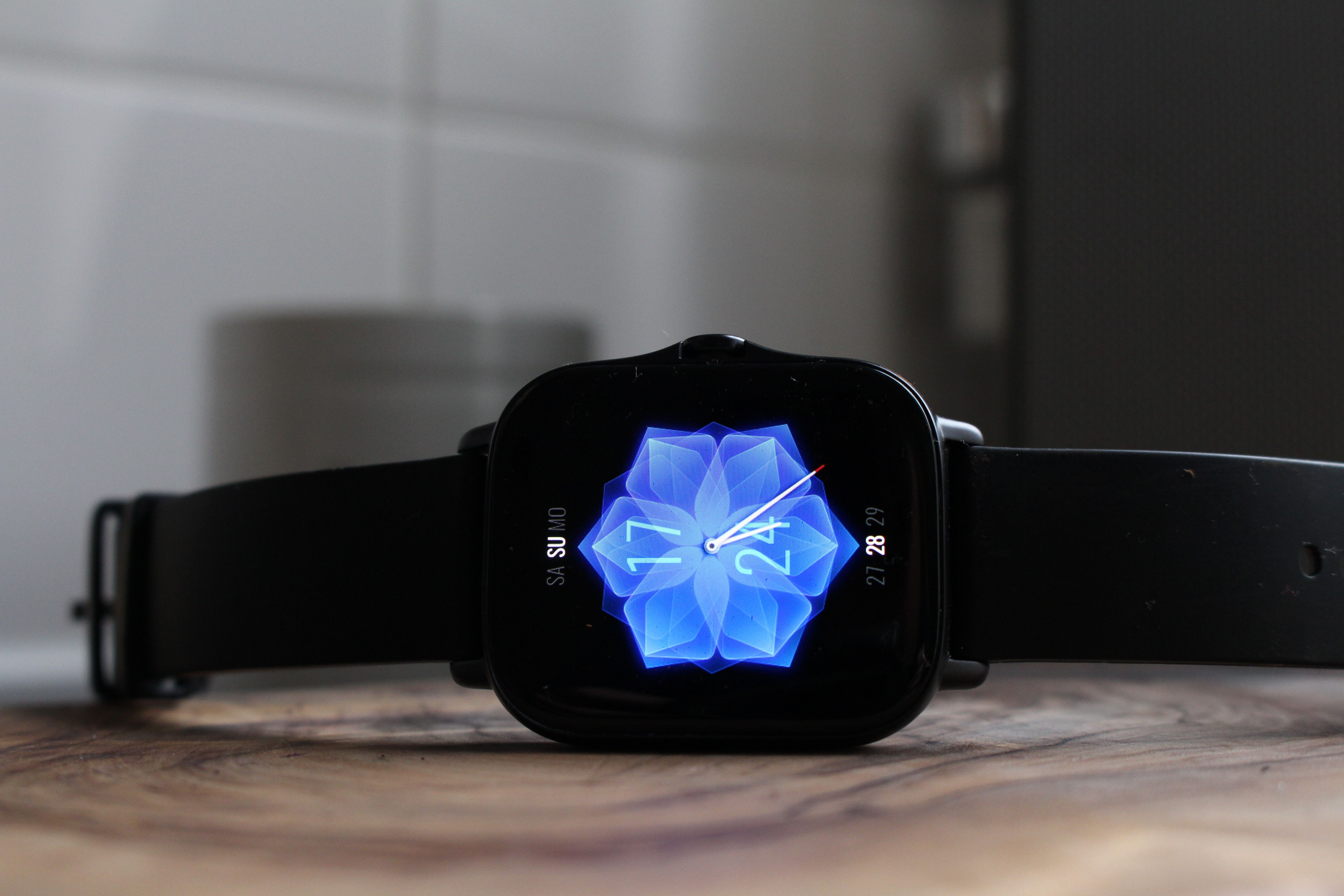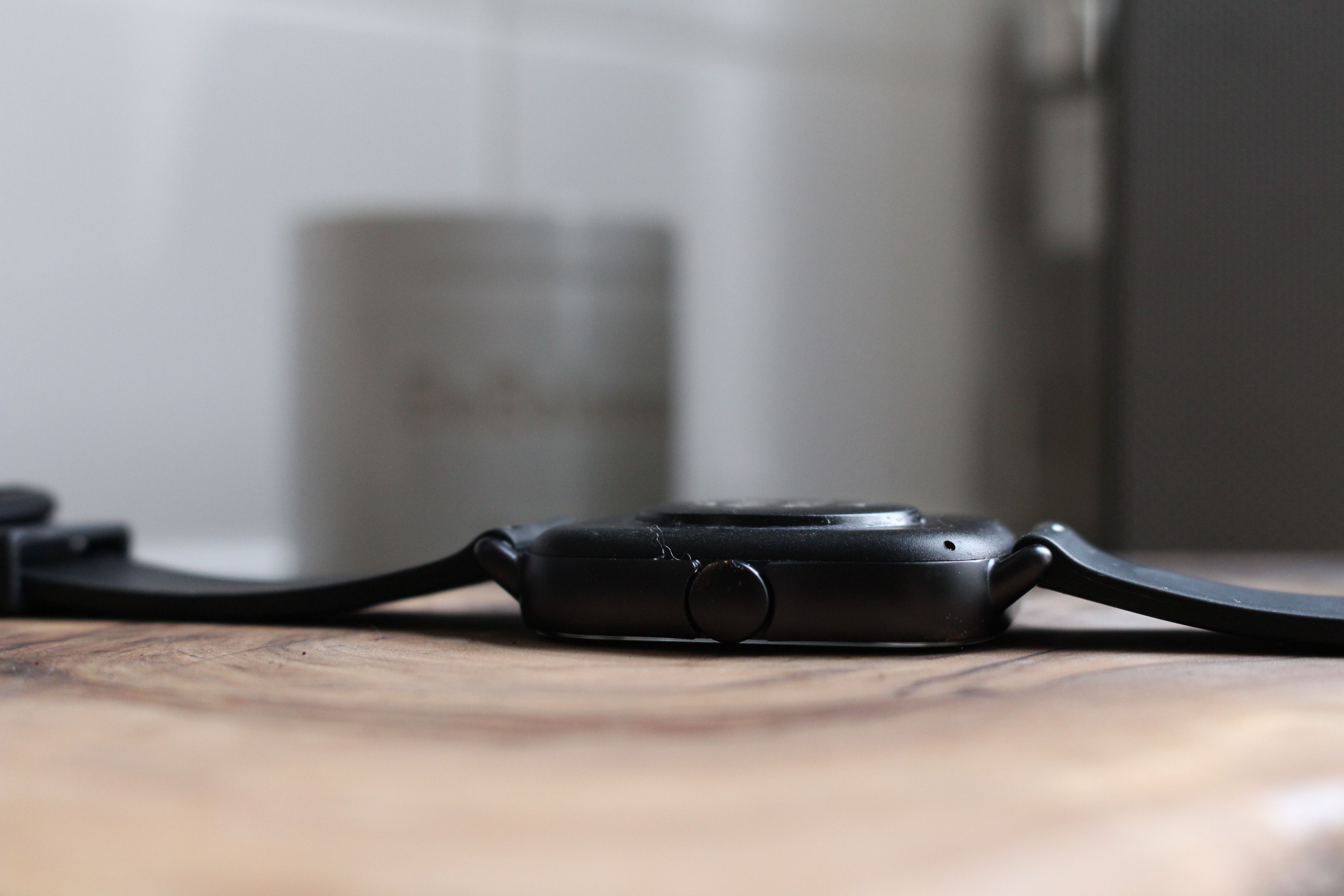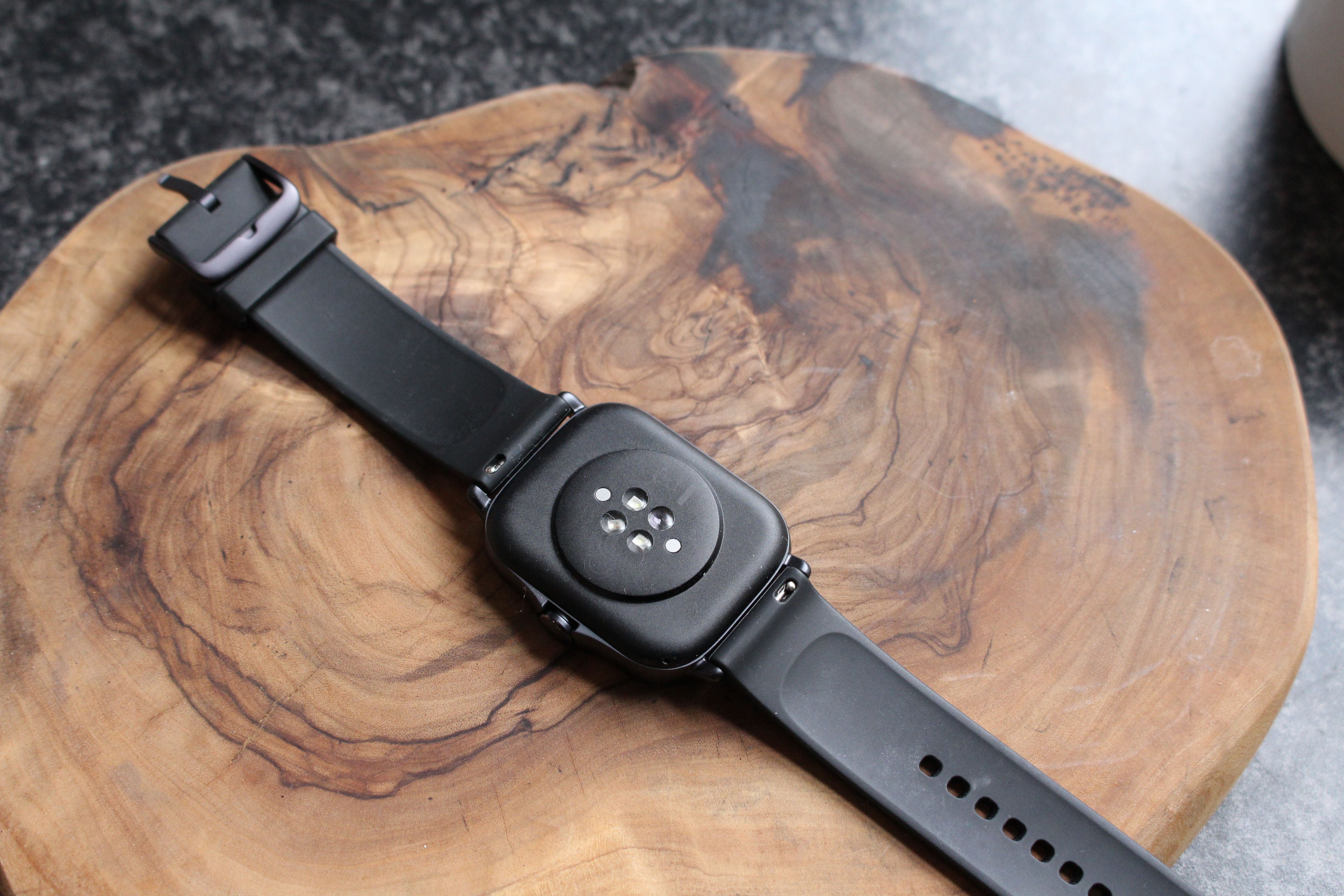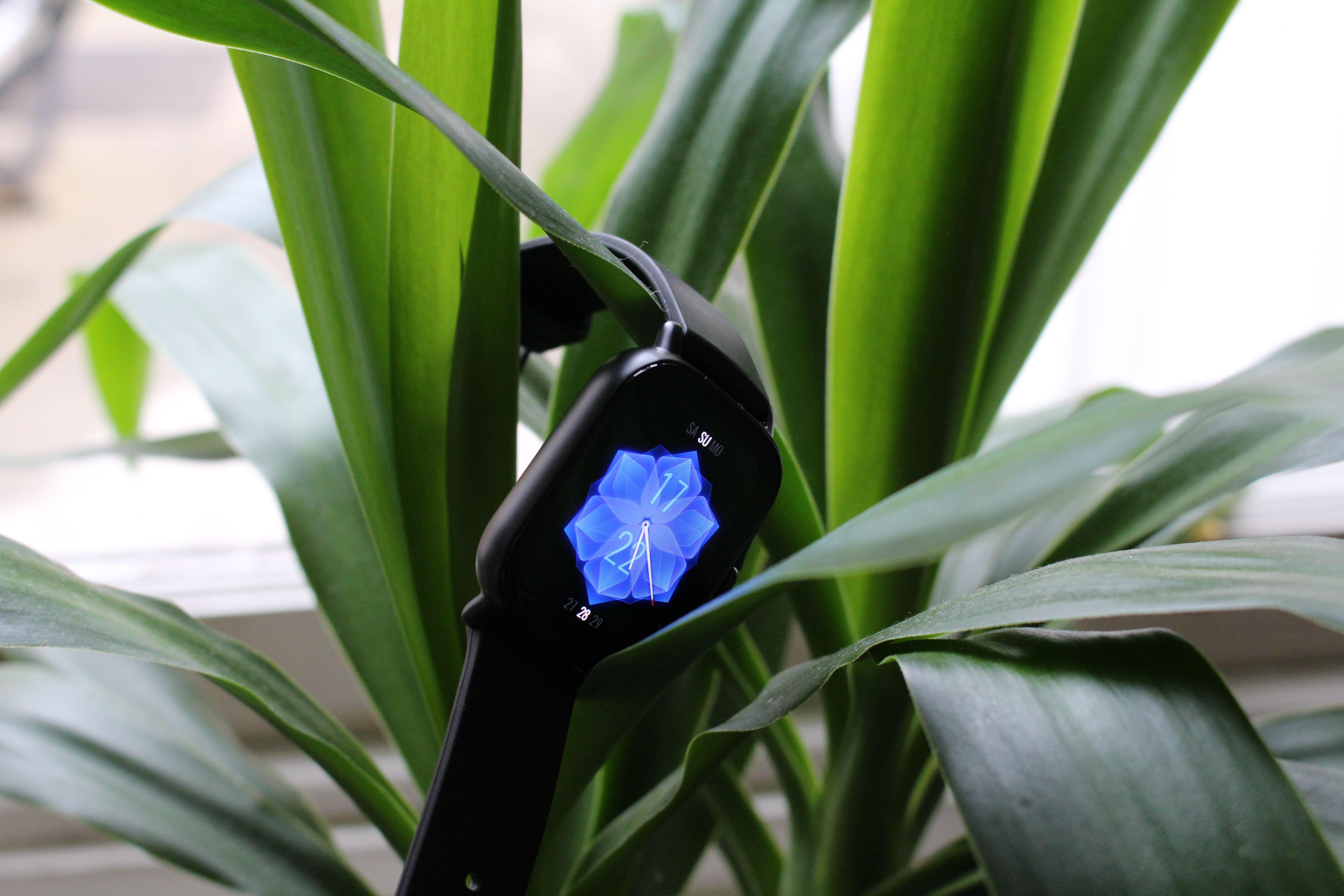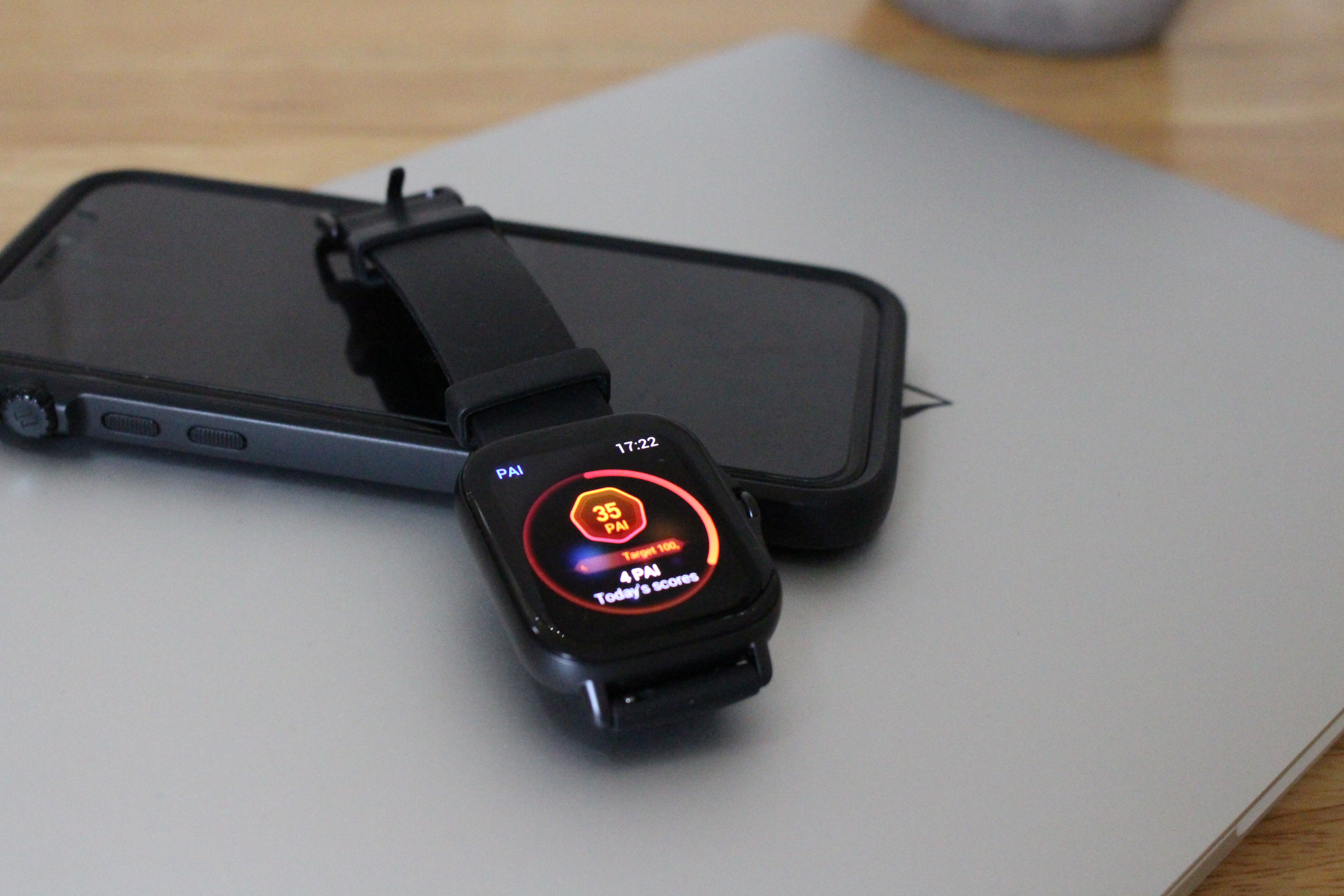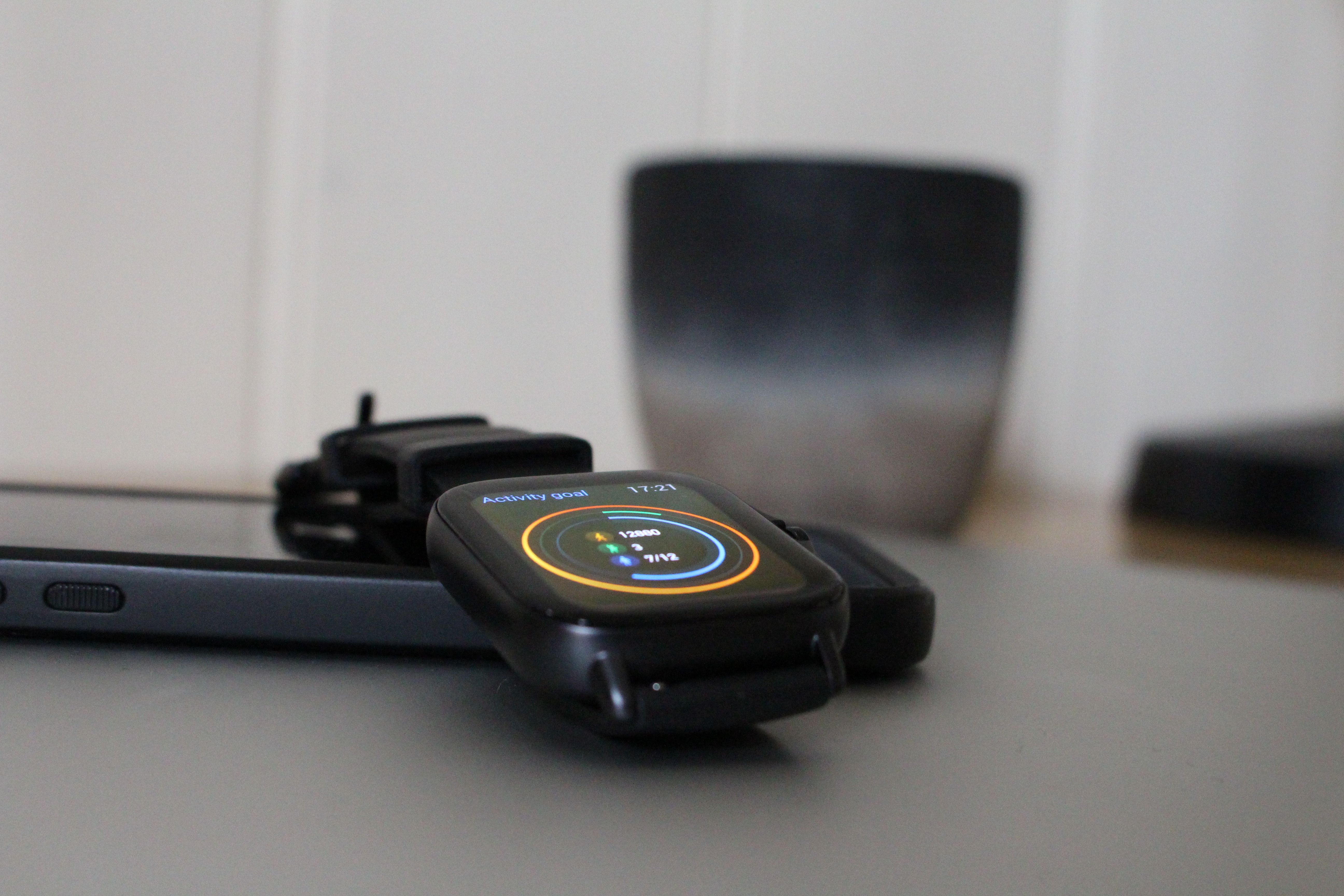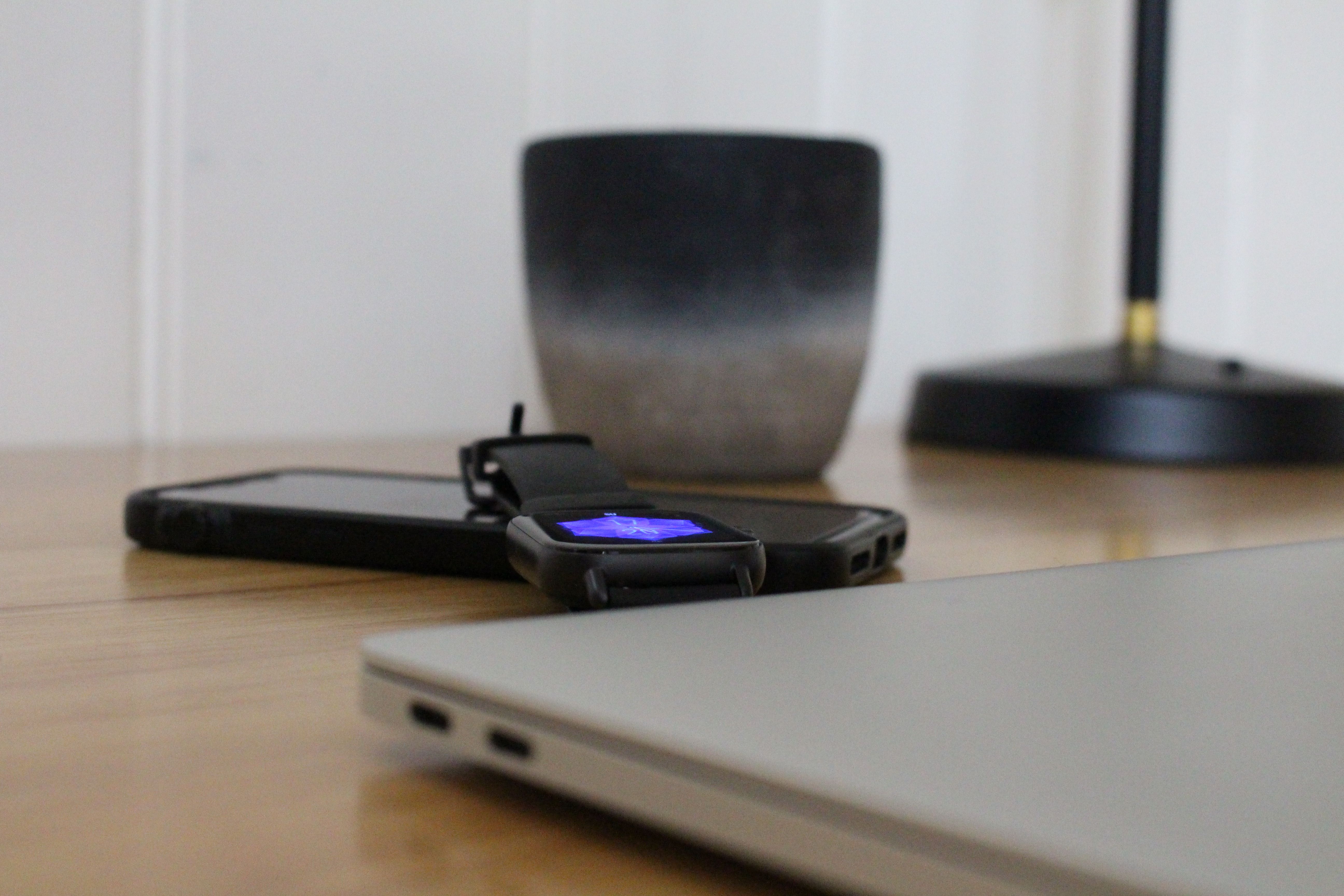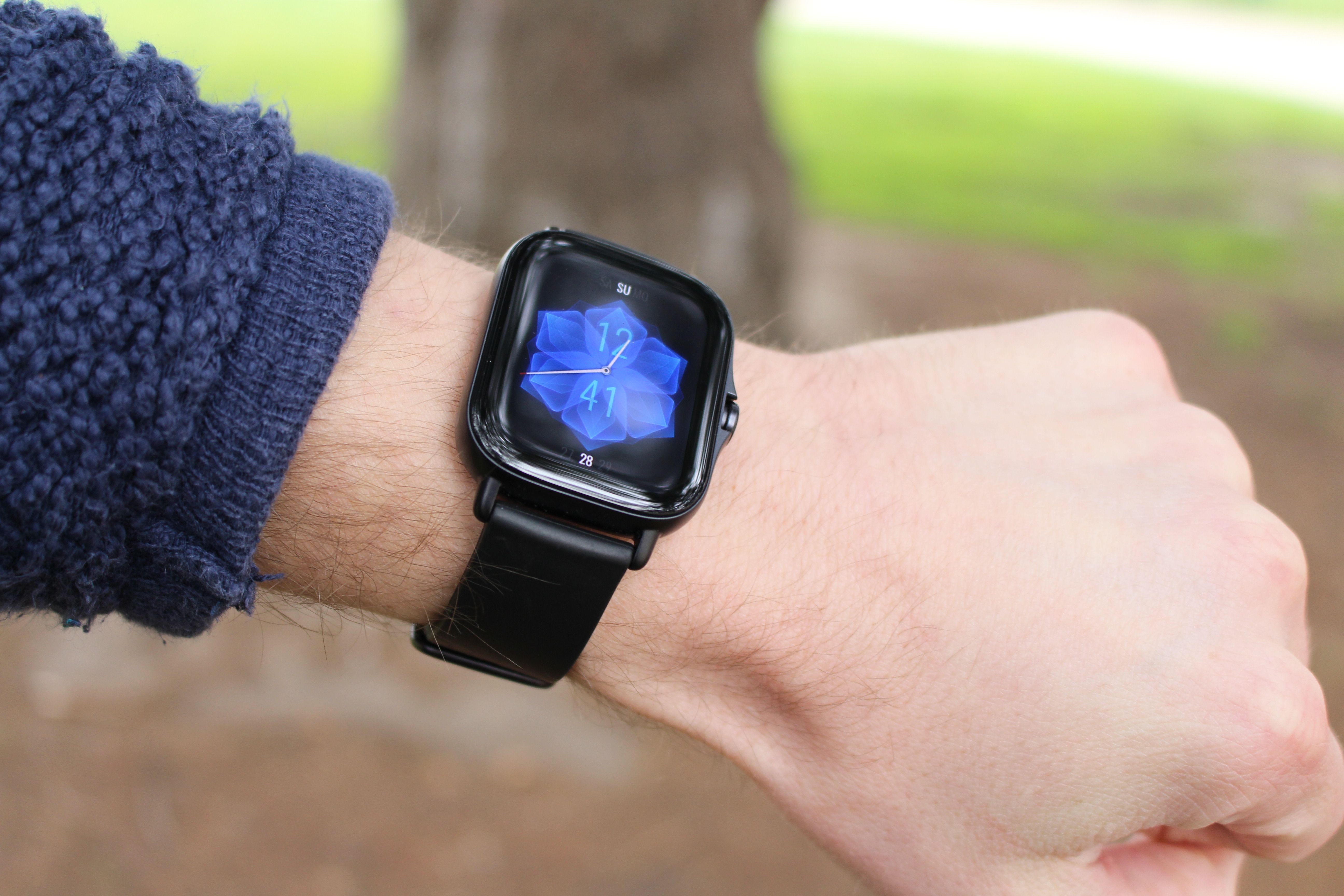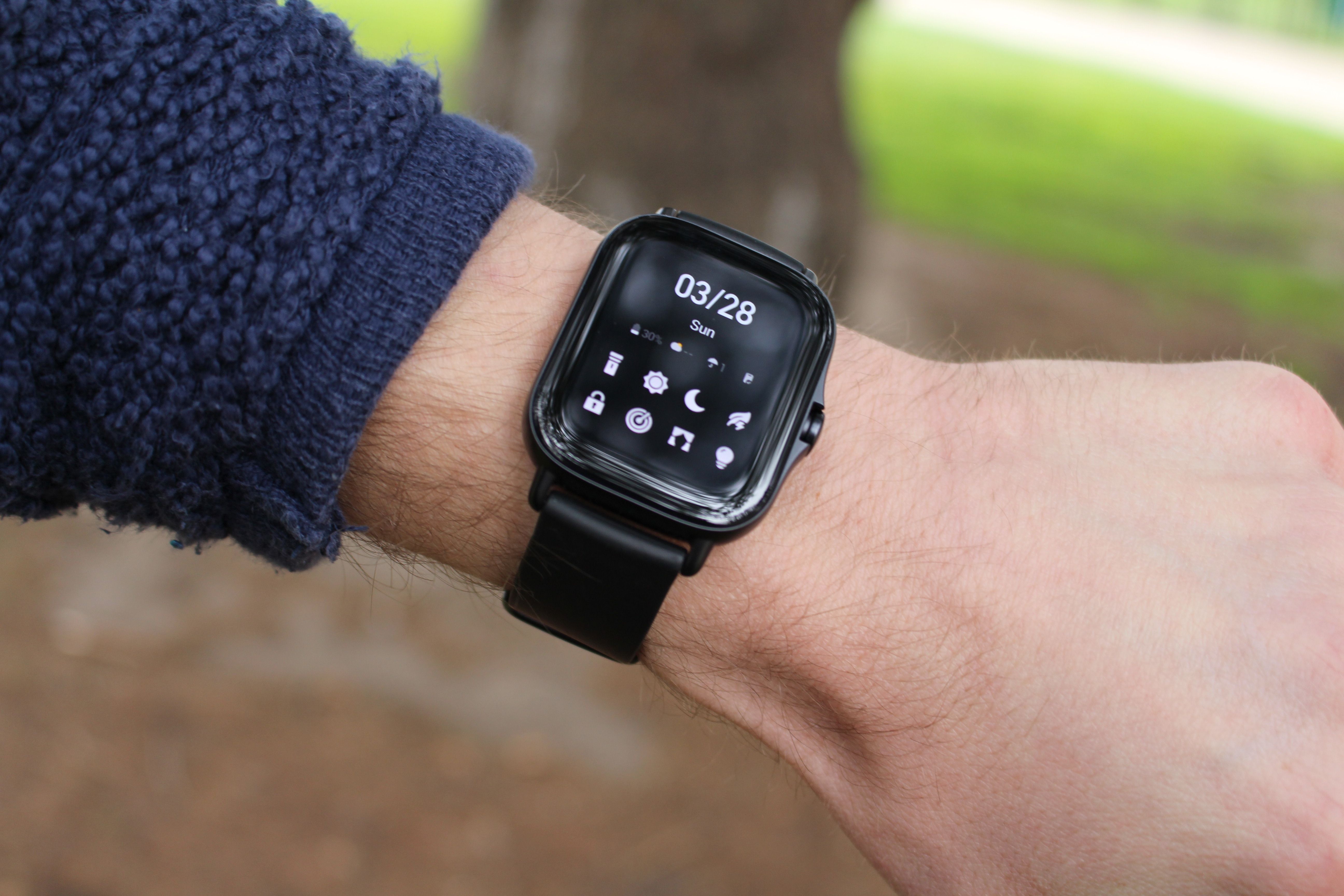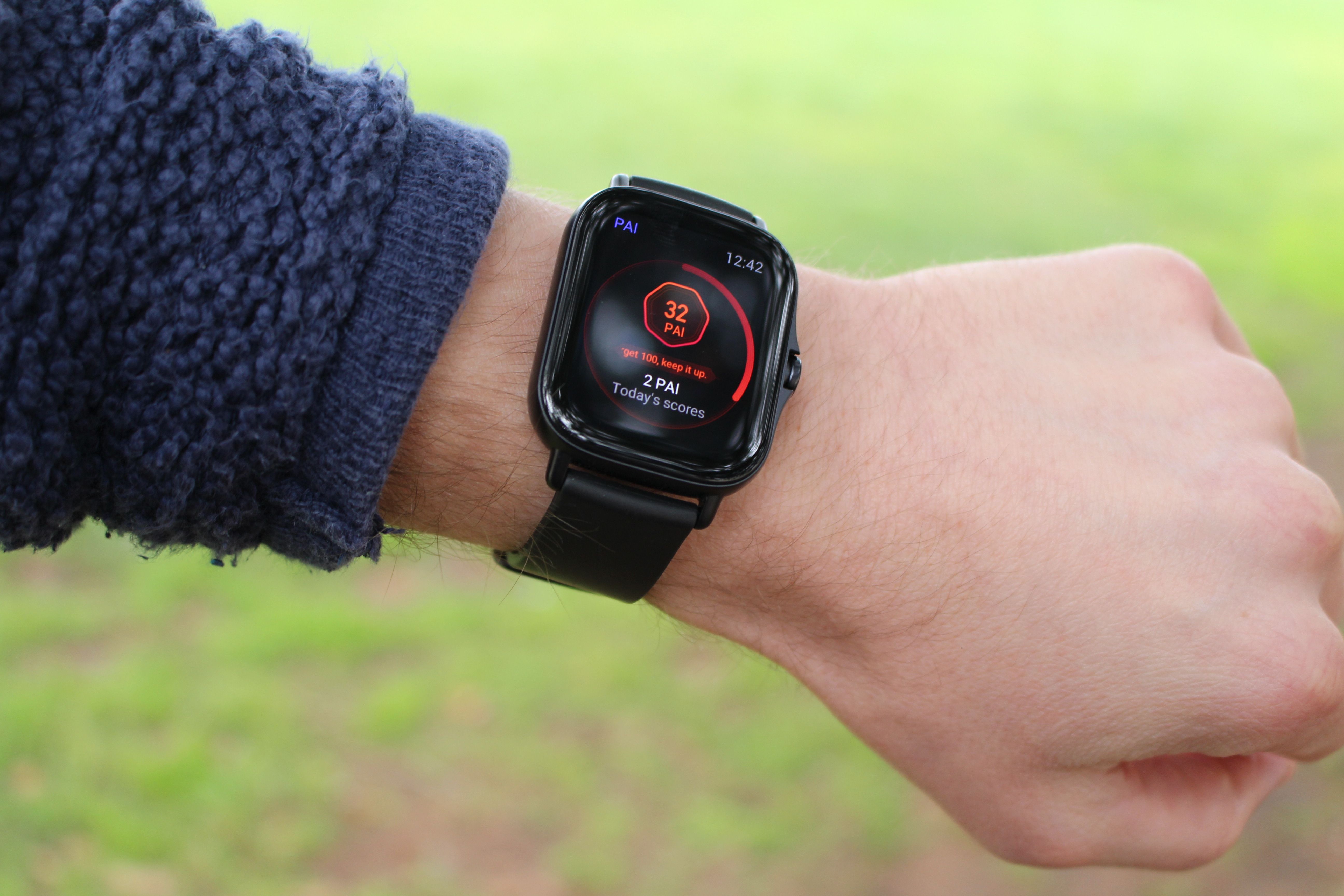Amazfit GTS 2e
The Amazfit GTS 2e is an aesthetically-pleasing smartwatch packed full of features. The watch runs Amazfit OS and syncs data to your smartphone via the Zepp companion app. It comes with a range of health and fitness tracking features, so it appears an attractive, affordable investment. However, a poorly thought out software experience and a lack of clear documentation means that your money is better spent elsewhere.
- 10-day battery life
- Offline voice commands
- Onboard GPS
- Huami's BioTracker 2 health tracking sensors
- Waterproof up to 50m
- Brand: Amazfit
- Heart Rate Monitor: Yes
- Color Screen: Yes
- Notification Support: Yes
- Battery Life: Up to 20 days
- Operating System: Amazfit OS
- Onboard GPS: Yes
- Offline Media Storage: No
- Customizable Strap: Yes
- SIM Support: No
- Stylish design
- Relatively affordable
- Fitness tracker features
- Temperature sensor
- Repeatable lag during swipes
- Poorly communicated features and UI
- Inconsistent connection to the companion smartphone app
- Notifications aren't attributed to a specific app
With the launch of the Apple Watch, the US-based tech company managed a feat no other had achieved: to make smartwatches desirable. Aside from Apple's device, most smartwatches used to run Google's disappointing Wear OS platform.
If you wanted neither a Google-designed experience or an Apple Watch, your only other choice was a Samsung wearable running Tizen. Fortunately, many companies have now abandoned Google's platform in favor of their own solution, while brands like Fitbit offer extended fitness trackers with some smartwatch features.
That's also the case with the Amazfit GTS 2e. This affordable smartwatch doesn't rely on Google services but comes with an Apple Watch-esque design at Fitbit prices. On paper, there's a lot to admire about the Amazfit GTS 2e. So, does it live up to those expectations?
Amazfit GTS 2e Design
At first glance, the Amazfit GTS 2e could be mistaken for the Apple Watch. This, in itself, is no bad thing. The Apple Watch, like many of the company's products, is fashionable and desirable. For a range of social and financial reasons, having an alternative that looks stylish but is much more affordable is undoubtedly a good thing. The almost-square, partially-rectangular watch face has a tiny bezel around the edge.
On the right-hand side, there a discreet button for you to press. This activates the display, opens menus, and allows you to select on-screen items. The watch is only 9.8mm thick, so it doesn't look too large or bulky on your wrist. It would fit comfortably under your sleeve, jacket, or coat. On the underside, there is a slight protrusion that houses some of the watch's sensors.
These optical sensors need to be close to your skin to record data accurately. Above and below the four visible sensors are the two charging pins. Unfortunately, this means another charging cable to add to your collection. It would have been nice to have something more standardized, but this is hardly out of step with the rest of the market, and it is partly down to other design considerations, too.
For instance, the Amazfit GTS 2e is waterproof to a depth of 50m. Consequently, you can easily wear the watch throughout the day while exercising, swimming, out in the rain, or even in the shower. Fortunately, the watch is also comfortable to wear over long periods. The materials didn't cause inflamed skin or adverse reactions during testing, and even sleeping with the watch on only resulted in some light skin markings.
The strap, made of silicone, is the only inconvenience here. In principle, this band is designed to be sweat-proof and the most universally wearable. The black strap fits in with the black watch unit, and the minimalistic material accentuates the watch's design. However, the band is exceptionally slippy. This means that it often allows the watch to move around on your wrist, a problem for accurate measurements. Similarly, the band frequently comes loose from the strap loops.
Amazfit GTS 2e Features
Given the $140 price, the Amazfit GTS 2e fits many features into a tiny package. Aside from the previously noted waterproofing, the watch offers a variety of hardware and software-based functions. The watch runs the imaginatively named Amazfit OS in place of more common software options like Google's Wear OS or Samsung's Tizen. The watch syncs data to the Zepp smartphone app, which is available for Android and iOS devices.
Impressively, the GTS 2e is available in three different colors, with each variant coming with a colored strap and a matching bezel outline. The 1.65-inch AMOLED display is covered with slightly curved glass for a smooth exterior up to the bezel. Depending on your usage, the company suggests you can achieve between 14 and 20 days on a single charge. In practice, this turned out to be closer to around 10 days, although that's still impressive for a smartwatch with a color display.
The watch also comes with an offline voice control feature. Rather than integrating with popular voice assistants like Siri, Google Assistant, or Alexa, the Amazfit GTS 2e supports voice commands even when you aren't connected to the internet. This seems like a niche use case, as the majority of smartwatch features like notification mirroring and media controls rely on an active connection to your phone, which presumably won't be often disconnected from the internet.
Still, it's an interesting feature, even if the voice activation was spotty and inconsistent. The watch is also equipped with the Huami-developed BioTracker 2, a package featuring a combination of health-monitoring sensors. This allows you to access 24-hour real-time heart rate monitoring, a SpO2 sensor for tracking blood oxygen levels, and enjoy sleep quality analysis. It also features automatic exercise tracking for up to 90 different activities, and the watch has a built-in GPS unit. Notably, the Amazfit GTS 2e also includes a temperature sensor.
This is reasonably unique among smartwatches and fitness trackers, and in the current global context where fever may represent the presence of COVID-19, it may well be a crucial feature. That is, so long as it is accurate. The temperature sensor relies on contact with the skin on your wrist. This isn't the hottest part of your body, but it should be roughly between 33 and 36 degrees Celcius. However, my average temperature came out to 27.7 degrees Celcius, so perhaps not entirely accurate enough to rely upon.
Amazfit GTS 2e Setup
Once you've strapped the watch to your wrist, it should be simple to set up. Most Amazfit watches even come with an easy pairing feature, where you download the smartphone app and scan a QR code displayed on the watch's screen. For many people, poking around in Bluetooth settings is a headache they'd rather avoid, so this is a neat idea. However, here is where the Amazfit GTS 2e begins to show its flaws.
During the initial setup, the watch connected to the Zepp smartphone app. The app is available for Android and iOS, and most of the watch's features are available on both platforms, a rarity for a smartwatch. Often, these wearables find themselves hobbled when attached to an iPhone due to Apple's more restrictive operating system. However, once connected, there were some teething troubles.
The app immediately noted a firmware update for the watch, not uncommon when unboxing a new device. However, despite being connected, the app repeatedly reported that the watch wasn't connected while continuing to send notifications to the connected wearable. At some point, the watch face also got confused, and the on-screen display was rotated 90 degrees and stretched across the watch so that you couldn't view or interact with it.
After a few attempts to resolve the problem, eventually, a factory reset of the watch and reinstalling the Zepp app got things working again. This may have been a one-off experience, but it was difficult to troubleshoot as there is little documentation for the watch. There's another quirk during the pairing process that may have been partly responsible for this difficulty.
The QR-based setup is straightforward but appears to bypass Bluetooth pairing. It's not entirely clear how the app communicates with the watch, but it isn't until you activate notification mirroring that you actually pair the GTS 2e with your phone's Bluetooth. Once you have, though, the watch can receive operating-system-level notifications like calls, texts, and other apps.
Notification Mirroring
The functions of a smartwatch often overlap with a fitness tracker. Most watches can track steps, monitor sleep, and keep tabs on your heart rate. Aside from the extended display, what often separates a smartwatch from a fitness tracker is notification mirroring. When connected to your smartphone, the Amazfit GTS 2e can display notifications, saving you from constantly pulling out your phone after every vibration.
The GTS 2e handles call and text notifications well. However, the same isn't true of other apps. Despite granting permissions, the watch dumps all other notifications into a broad category titled Apps and doesn't tell you which app has sent you the notification. Sometimes you can guess---emails often look different from texts---but it's not at all clear when it comes to messaging apps where every notification seems the same.
Once you've been baffled on your wrist, you find yourself pulling out your phone actually to check the notification. This is entirely opposed to a smartwatch's primary purpose; to make it convenient to disconnect from your phone. While this is a confusing function, it would be manageable in isolation, but it's just one of a series of ill-thought-out or buggy software experiences.
Amazfit GTS 2e Software Interface
For instance, after pressing the hardware button to activate the display, swiping left shows your activity goals, represented by three colored circles. From the on-screen icons, yellow is walking or steps, the green icon is an outline of a person with an arm raised, possibly representing workouts, while the third circle's icon is an outline of a static person. The watch doesn't come with much documentation, so you're left pondering the meaning of each of these yourself.
However, swipe right on the watch face, and there's an immediate lag to display your shortcut cards. This isn't dependent on what you'd been doing previously or what other functions were running. Every time you swiped right from the main display, there would be a noticeable lag as the on-screen displays changed. The entire shortcuts page seemed somewhat redundant, too, as most of the data is shown in a larger format on other screens.
Swiping down on the watch face brings up a settings panel with another set of unclear icons that are too close together for you to select accurately. As a result, it is all too easy to accidentally activate the all-white, bright display of the torch function instead of adjusting the brightness down in dark environments.
Despite featuring prominently on the watch face, the settings panel also displays the date, taking half the screen to do so. The remaining settings and icons are squashed into the bottom half of the screen to accommodate this large text. The battery status icon, for example, is barely legible without bringing the display closer to your eyes.
Continuing to swipe through the display, you get presented with real-time heart rate measurements, shown as a graph and a numerical readout. Scrolling that screen shows an analysis of how long you've spent in each of the six defined heart rate zones. There's an entire screen dedicated to media controls, although this didn't work throughout testing. Likewise, the weather screen consistently displayed an error that it couldn't obtain the forecast.
The final display brings up your PAI, an overall daily activity score. As with other areas of this software, this panel is not easy to decipher. A scrolling note tells you that you want to achieve a score of 100. As a visual representation, the display shows a circle that fills the closer to your goal. Inside that circle is a box displaying your score. Underneath that, there's another version of the score with a different number.
So, there were times that my PAI would be listed as both 28 and 2 simultaneously on the same display. The PAI Q&A in the Zepp app indicates that PAI stands for Personal Physiological Activity Indicator. You're aiming for a score of 100 each day, although that combines today's fitness data with the data of the past seven days, so it's like a rolling tally. Although not explicitly explained, it seems that the score of 28 may be the overall seven-day score, while the lower figure is how many you've earned in a given day.
Repairability and Environmental Impact
As with all smartwatches, it's important to note that, should something go awry with the hardware, you won't be able to fix this yourself. The electronics are densely packed into the casing and are, understandably, extremely small and delicate. Depending on the specific design, even opening the outer shell may irreversibly damage the watch's water resistance.
Consequently, you have to rely on the manufacturer's benevolence to either offer a generous warranty or have an extensive repair program. Very few manufacturers actually provide either, so the lack of support isn't unusually notable here. However, it does mean that your gadget is quite likely to become unusable should it get damaged or have a hardware fault. Unlike traditional timepieces, you can't take your smartwatch to a local jeweler to take a look at either.
In the case of the Amazfit GTS 2e, the strap can be replaced with any of your choosing, so long as it has quick-release pins. If you purchase the watch for its features, then you'll probably want to upgrade from the default strap to something more premium, or at least a band that doesn't constantly slip while you're wearing it. As noted earlier, the software experience here leaves a lot to be desired.
The smartwatch is priced so that it feels like an investment, but, equally, it's not too high a cost that you wouldn't consider chucking it into a drawer should it not make your life easier or more convenient. Unfortunately, the often frustrating operating system means that you might get a notification on your wrist but reach for your phone all the same. At which point, you may question why you're wearing it all.
This is particularly discouraging as it leads to unnecessary electronic waste. Were you to stop wearing this watch, you may still buy another one. As a direct result of a bad software interface, the entire watch and all the resources used in its construction effectively become electronic waste. Upsettingly, this is entirely avoidable, especially as the most impactful part to the environment, the physical hardware, is actually rather good.
Should You Buy The Amazfit GTS 2e?
Despite some excellent hardware, an attractive design, and an affordable price, the Amazfit GTS 2e ultimately fails at the smartwatch's core function: convenience. The unintuitive watch interface feels half-finished, alongside some poorly phrased commands and options that make the wearable feel like a knock-off rather than a stylish smartwatch you'd be proud to wear.
Sure, the exterior design is heavily influenced by the Apple Watch's sleek style, but the GTS 2e doesn't extend that mentality to the entire experience. The components inside the watch should be able to cope with the software and standard inputs like swiping, but there's often lag, or the on-screen buttons inaccurately respond to your touch. Features are poorly explained, like the offline voice controls, and even the smartphone app doesn't really help you usefully analyze all the data you collect throughout the day.
Ultimately, the Amazfit GTS 2e might look good, but the execution feels far more representative of a cheap smartwatch you might pick up on a whim, not a mid-range fitness-focused smartwatch. For the $140 cost of the GTS 2e, you could buy a Fitbit Versa 2, a far more professional and mature smartwatch. There's nothing majorly wrong with the Amazfit GTS 2e, but there's nothing right about it either. Protect your wallet, prevent more electronic waste, and buy something else instead.

